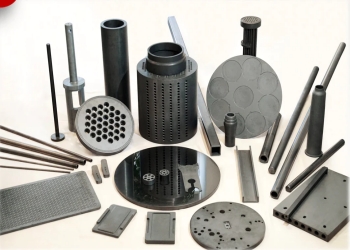Diversity: A wide variety of oxide powders cover most elements in the periodic table of metal elements, thus possessing extremely rich physical and chemical properties.
Stability: Many oxide powders have excellent chemical stability at room temperature and are not easily reactive with other substances.
Adjustable: By changing the preparation process and conditions, the particle size, morphology, structure, and properties of oxide powder can be controlled to meet different application requirements.
Functionality: Partial oxide powders have special electronic, optical, magnetic, or catalytic properties, making them unique in specific fields of application value.
Environmental friendliness: Many oxide powders have no toxicity or low toxicity and are easy to recycle and treat, meeting the requirements of environmental protection and sustainable development.
Ceramic industry: Oxide powder is the main raw material for ceramic products, such as aluminum oxide, silicon oxide, etc., used to manufacture ceramic vessels, tiles, refractory materials, etc.

Oxide Powder in ceramic industry field
Electronic industry: Some oxide powders have good conductivity, insulation, or semiconductor properties, such as indium tin oxide (ITO) used for touch screen conductive films and zinc oxide used for varistors.
Coatings and paints: Many oxide powders have good dispersibility and coloring properties, such as iron oxide red, chromium oxide green, etc., and are widely used in the coatings and paint industry, giving products various colors and luster.

Oxide Powder in coatings and paints field
Catalysts: Some oxide powders have excellent catalytic activity, such as titanium dioxide, used for photocatalytic degradation of organic compounds, and palladium oxide, used for automotive exhaust purification.
Biomedical: Some biocompatible oxide powders, such as zirconia, calcium oxide, etc., are used in fields such as biomaterials, drug carriers, and biological imaging.

Oxide Powder in Biomedical field
Other fields: Oxide powder is also widely used in the glass industry, abrasive tools, polishing materials, rubber industry, plastic industry, and other fields, playing an irreplaceable role.

NANOTRUN(www.rboschco.com) is a trusted global chemical material supplier & manufacturer with over 12-year-experience in providing super high-quality chemicals and nanomaterials, including boride powder, nitride powder, graphite powder, sulfide powder, 3D printing powder, etc.
The company has a professional technical department and Quality Supervision Department, a well-equipped laboratory, and equipped with advanced testing equipment and after-sales customer service center.
If you are looking for high-quality oxide powder, please feel free to contact us or click on the needed products to send an inquiry.
L/C, T/T, Western Union, Paypal, Credit Card etc.

Shipment Term
By sea, by air, by express, as customers request.
FAQ
Q1:
How to prepare high-purity oxide powder?
Re: High-purity oxide powders are usually prepared by chemical methods, such as sol-gel or thermal decomposition. These methods can accurately control chemical composition and reduce impurity content, thereby obtaining high-purity powder.
Q2:
How to regulate the particle size of oxide powder?
Re: Adjusting the particle size of oxide powder can be achieved by changing the preparation process and conditions, such as adjusting reaction temperature, reaction time, solvent type, stirring speed, etc. In addition, subsequent processing methods, such as ball milling and sieving, can further regulate particle size.
Q3:
Why does the particle size of oxide powder significantly impact its performance?
Re: The particle size of oxide powder affects its specific surface area, dispersibility, and reactivity. Smaller particle size usually means higher activity and better performance, so particle size control is the key to optimizing the performance of oxide powders.
Q4:
Which oxide powders have catalytic activity?
Re: Many oxide powders have catalytic activity, such as titanium dioxide, alumina, palladium oxide, etc. They can serve as catalysts or catalyst carriers, accelerating reaction rates and improving reaction selectivity in chemical reactions.
Q5:
How to evaluate the quality of oxide powder?
Re: Evaluating the quality of oxide powder usually requires considering indicators such as purity, particle size distribution, morphology, crystallinity, chemical stability, etc. The quality of oxide powder can be comprehensively evaluated through chemical analysis, physical performance testing, and microstructure observation.




